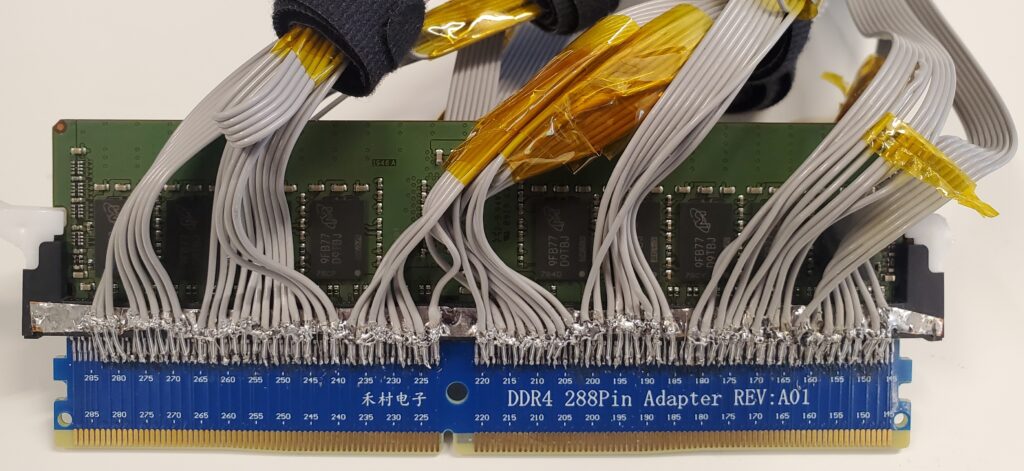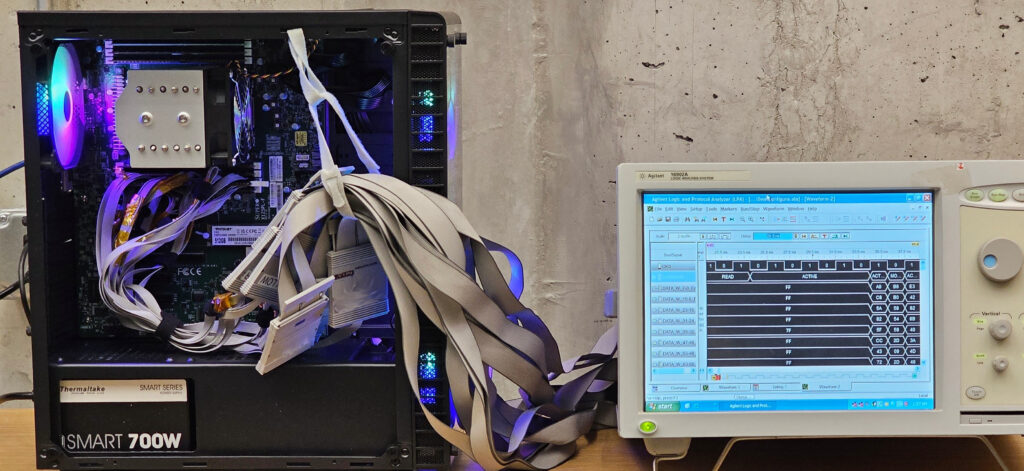The key benefit of Battering RAM is that it requires equipment that costs less than $50 to pull off. It also allows active decryption, meaning encrypted data can be both read and tampered with. In addition, it works against both SGX and SEV-SNP, as long as they work with DDR4 memory modules.
Wiretap
Wiretap, meanwhile, is limited to breaking only SGX working with DDR4, although the researchers say it would likely work against the AMD protections with a modest amount of additional work. Wiretap, however, allows only for passive decryption, which means protected data can be read, but data can’t be written to protected regions of memory. The cost of the interposer and the equipment for analyzing the captured data also costs considerably more than Battering RAM, at about $500 to $1,000.
The Wiretap interposer. Credit: Seto, et al.
The Wiretap interposer connected to a logic analyzer. Credit: Seto, et al.
Like Battering RAM, Wiretap exploits deterministic encryption, except the latter attack maps ciphertext to a list of known plaintext words that the ciphertext is derived from. Eventually, the attack can recover enough ciphertext to reconstruct the attestation key.
Genkin explained:
Let’s say you have an encrypted list of words that will be later used to form sentences. You know the list in advance, and you get an encrypted list in the same order (hence you know the mapping between each word and its corresponding encryption). Then, when you encounter an encrypted sentence, you just take the encryption of each word and match it against your list. By going word by word, you can decrypt the entire sentence. In fact, as long as most of the words are in your list, you can probably decrypt the entire conversation eventually. In our case, we build a dictionary between common values occurring within the ECDSA algorithm and their corresponding encryption, and then use this dictionary to recover these values as they appear, allowing us to extract the key.
The Wiretap researchers went on to show the types of attacks that are possible when an adversary successfully compromises SGX security. As Intel explains, a key benefit of SGX is remote attestation, a process that first verifies the authenticity and integrity of VMs or other software running inside the enclave and hasn’t been tampered with. Once the software passes inspection, the enclave sends the remote party a digitally signed certificate providing the identity of the tested software and a clean bill of health certifying the software is safe.


